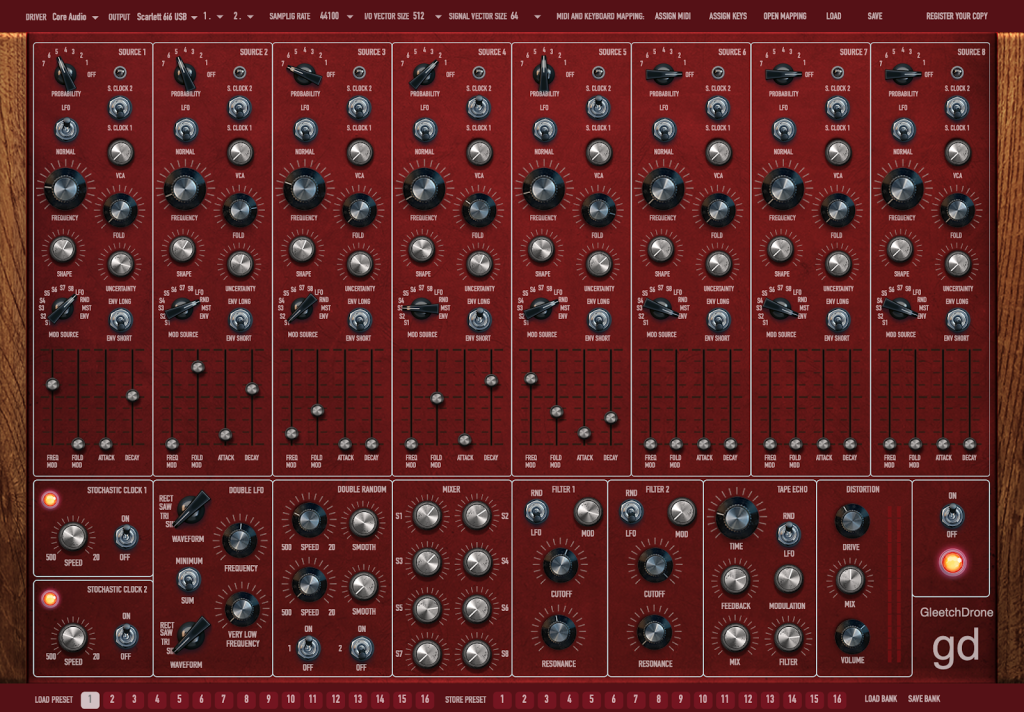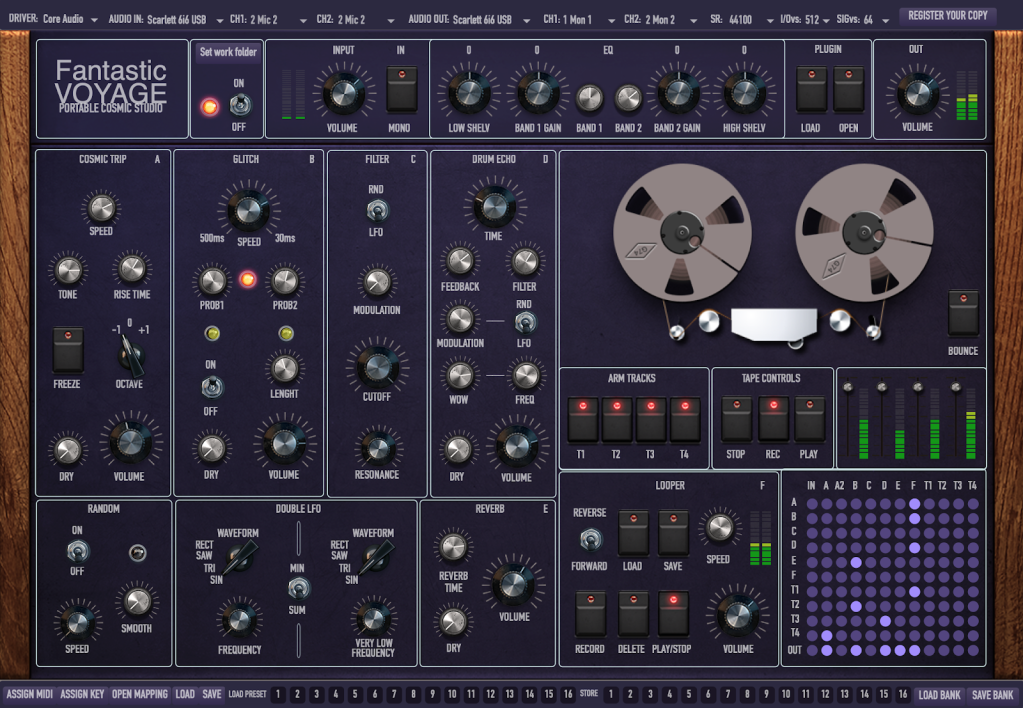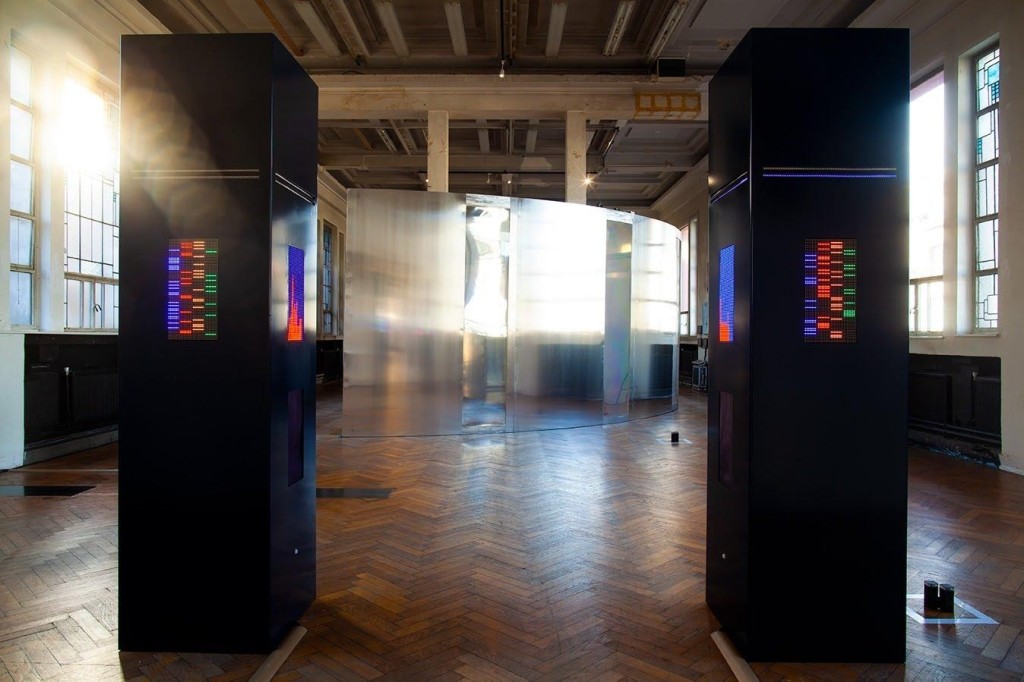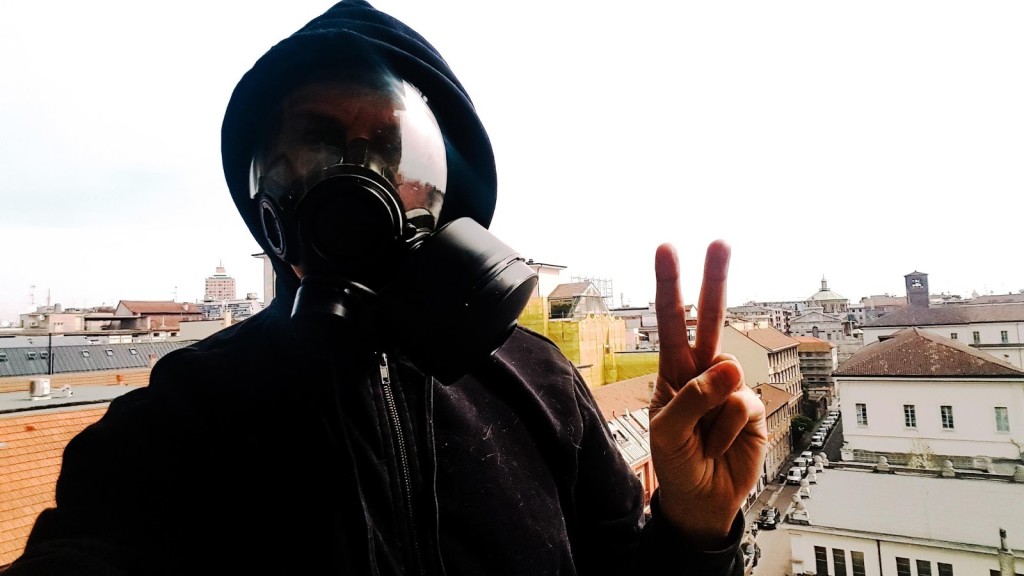From his machines’ novel ideas like neural network distortion to AV installation made from DNA, Giorgio Sancristoforo is a defiant, powerful musical voice – coming to us from deep in pandemic quarantine.
David Abravanel reports for CDM.
“At the end we will make it,” says Giorgio Sancristoforo. “Though I honestly don’t know what to expect in the aftermath.”
It’s an anxious and trying time for the entire world, dealing with the fallout of an unprecedented pandemic. The world’s hardest-hit region remains Lombardy, the northern province of Italy that contains industrial and fashion capital Milan, where musician, software developer, and visual artist Giorgio Sancristoforo lives.
Giorgio is perhaps best known for Gleetchlab, his music software environment designed for making experimental electro-acoustic music. Currently in its fifth incarnation as Gleetchlab X, it includes such unusual features as effects that use neural network modeling for distortion, replicate skips from scratched CDs (instant Oval!) or magnetic data corruption of a hard disk.
Giorgio’s music and audio-visual art are as eclectic as his software – whether it’s disco house as Tobor Experiment, or, lately, working with radiation and his own DNA sequence as sound sources and controllers.
Shortly before the pandemic hit, Giorgio emerged from a period of relative silence on the software release front with GleetchDrone, a gorgeous synth that showed off his new GUI design – skeuomorphic, yet remarkably clean and very friendly. Now comes Fantastic Voyage, a “Portable Cosmic Studio” inspired by the Tascam Portastudio, and featuring many of Giorgio’s own decidedly experimental ideas.
I caught up with Giorgio to get a glimpse of his life – the new software, his latest music and audiovisual projects, and living through the pandemic.
“Radiation Grooves”, an improvisation from Giorgio with sonified gamma radiation.
David: You took a break from releasing software, then came back to release GleetchDrone. You’ve been working with DNA, including your own sequence – how did that happen?
Giorgio: I code software for my work almost every day. The software for sale to the public is just the tip of the iceberg.
I’ve worked the whole year to get my DNA sequenced and to craft a “radiation projector” to use radioactive materials in an installation. I designed several algorithms to translate my genetic code into sound with quaternary mathematics. I call this system “Phonosomic Code”.
Once I get the sound out of my DNA, I use radioactive elements such as Sr90 to stimulate a mutation of the code. This research was possible thanks to the precious help of the scientists of the JRC Nuclear Security Unit, the JRC Biochemistry and Genomics Unit, and the JRC Knowledge for Health & Consumer Safety Unit. The installation was the first phase of this research.
I am working at 360°with genomics and radioactive materials to produce sounds, images, photos and meta-sculptures and of course software.
The quarantine put many events on hold that I should have attended in Spring 2020, so I thought that I could take a little break and code a couple of new instruments for the people who are stuck at home like me.

GleetchDrone is an impressive interface – were you inspired by any existing hardware?
Well yes. Soma Lyra-8 was the inspiration for GleetchDrone, in addition to some memories of my days with ADDAC modules. (I don’t have hardware synths anymore).
You know, many times it starts just as challenge between me and me. If I want a certain piece of hardware [in software form], I start coding and see what can I do to improve it for my needs.
For Fantastic Voyage, you said you were inspired by working with a Tascam Portastudio. Do you still have one?
No, I don’t have any analog equipment nowadays, except a Teac A3440 1/4”. But it must be repaired [laughs].
The Portastudio was my first recorder in the early 90s, I literally learned to play music thanks to that recorder. At that time I was into the psychedelic/indie scene (Spacemen3, Stereolab, Inspiral Carpets, etc.) and I learned to play guitar, bass, organ and synths to record songs on that machine. Fantastic Voyage is my ideal stomp-box/studio for tripping guitars, but people will do amazing things with it using any kind of instrument. It’s my tribute to psychedelia.

GleetchDrone and Fantastic Voyage were released within weeks of each other. Is there more software that you’re working on? Is this a new series?
I’ll tell you the truth: this very much depends on the length of the quarantine. I’ve been working on my personal software for the DNA work for months and I want to finish this as soon as possible, but I don’t rule out making new public releases in the coming weeks. There is much time nowadays.

Another of your programs, Berna, replicates a 1950s-style early electronic music studio. Are there any pieces from that era which remind you of what’s possible with Berna?
Berna is 90% a clone of the RAI Studio di Fonologia in Milan, so many musical pieces crafted in that studio could be theoretically re-recorded with Berna. But, keep in mind that a significant part of the job was tape splicing, the machines often played a secondary role in the early days of electronic music. The biggest part was the manual job on tape with scissors and scotch tape.
A classic piece that one could do on Berna is “Scambi” by Henri Pousseur.
Of course, if you are crazy enough, you could record Stockhausen’s “Studie II” (adding a lot of work in a DAW to edit the tape fragments), which was originally made at WDR studio in Cologne in 1954.
In the manual for Fantastic Voyage, you mention that it was developed during lockdown isolation in Italy. Obviously, it’s been a very difficult time for Italy with COVID-19. How have you been doing in isolation? What do you think about the role of artists and developers during this period?
I live in downtown Milan, and my region, Lombardy, has been hit very hard by the virus. We still don’t see the light out here.
As an artist and hardcore nerd my life has not changed dramatically. My loft is my atelier. I have more time to concentrate and fewer distractions, so I am very productive despite the situation. Of course I miss my friends, my bookstores trips, and sushi on the river. Each time I go to the supermarket I feel a little bit like I’m attending a Russian Roulette party.

The most frightening thing for me is the surreal silence broken by sounds of ambulances the whole day. One night we had an army helicopter flying over our heads shining light beacons; it was patrolling downtown, and I tell you, it was not a pleasing experience. I’ve never seen that before. It felt very dramatic, but at the end we will make it.
Though I honestly don’t know what to expect in the aftermath.
It could be a chance to change our society. I hope that this virus will make us better persons.
But I also see many irrational responses to the crisis. A lot of ideological polarization driven by fear and denial of science, plus a good deal of confusion among politicians and journalists which is now showing how many of them are unfit for the job. The virus is a test for us all. For sure this is an historical event of unprecedented size. We’ll see what the future will bring.
Artists and developers are doing a great job. Artist are hit very hard by the virus with the cancellation of exhibitions, concerts etc. The whole art industry will suffer income losses for millions of euros. Yet the artistic community is doing a great job to make the people who are stuck at home feel a little better, with streaming of music, events, lessons. I am truly amazed by this tenacious response. It is also true that creative people are lucky. They can invest this quarantine time to serve the community and at the same time they have the intellectual means to cope with a long forced lockdown.
My artistic work is about mutation and transformation. Transformation is the very essence of life.
Changes are never easy and seldom painless. We are facing a huge transformation, It’s up to all of us, to turn this tragedy into a change for the better.
War, social injustice, poverty, famine, climate change, are all out there.
The virus is a tough teacher, we must learn from it. Climate change will be a much powerful enemy, we must be prepared for a bigger war.
The virus shows us how anachronistic and useless are the idea of nations. We are one single planet.
This war will not be fought with weapons, but with compassion, care, solidarity and a radical shift in our priorities.
Stay safe.
Play loud.
Love
Giorgio
Trial/purchase Giorgio’s software – including Gleetchlab X, GleetchDrone, and Fantastic Voyage
Giorgio Sancristoforo on Vimeo
Giorgio Sancristoforo on Bandcamp